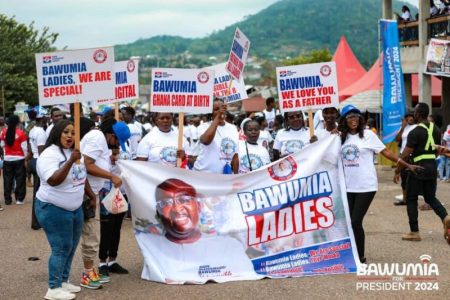The Ghanaian film industry, much like other vibrant cinematic landscapes across the globe, often finds itself embroiled in debates surrounding nomenclature, ownership, and the rightful attribution of creative origins. One such debate has recently ignited within the Kumawood scene, the sector of the industry based in Kumasi, Ghana, and known for its prolific output of Twi-language films. The controversy revolves around the term “Kumawood” itself and who can legitimately claim to have coined it. The central figures in this heated exchange are Samuel Nyamekye, a veteran filmmaker and CEO of Miracle Films, and Samuel Kwabena Darko, popularly known as Samdakus, both prominent figures in the Kumawood landscape. The dispute, playing out in the public arena through interviews and social media, underscores the complex interplay of creativity, industry recognition, and historical accuracy within the evolving narrative of Ghanaian cinema.
The spark that ignited this recent conflagration was Samdakus’ assertion, made during an appearance on Seancity TV, that he was the originator of the term “Kumawood.” This claim, however, was swiftly and vehemently countered by Samuel Nyamekye. In a subsequent interview on the same platform, Nyamekye categorically refuted Samdakus’ claim, branding it as both false and historically inaccurate. Nyamekye provided his own account of the term’s genesis, placing its birth at the 2008 funeral of actor Kwame Owusu Ansah in Accra. He recounted a scenario where Kumasi-based filmmakers felt marginalized, leading him to declare in a moment of frustration, “We the Kumawood people are leaving!” According to Nyamekye, this spontaneous utterance marked the inception of the term “Kumawood,” a label born out of a sense of collective identity and perhaps a subtle act of defiance against perceived marginalization within the larger Ghanaian film industry.
Nyamekye readily acknowledges Samdakus’ role in popularizing the term, particularly through the Kumawood Awards, an event that significantly boosted the visibility and recognition of Kumasi-based filmmaking. However, Nyamekye insists that popularization does not equate to creation. He draws a clear distinction between the act of coining the term and the subsequent efforts to promote and disseminate it. Using a familial analogy, Nyamekye posits himself as the “father” of Kumawood, the one who brought the term into existence, while others, including Samdakus, played a role in its upbringing and development. This distinction, in Nyamekye’s view, is crucial in understanding the true origins of the term and correctly attributing its creation. His emphatic declaration, “I gave birth to Kumawood — others only helped raise it,” underscores his firm belief in his pivotal role in the term’s emergence.
This public disagreement between two influential figures within the Kumawood industry highlights the often-contested nature of historical narratives, especially within creative fields. The absence of formal documentation or widespread public recognition of the term’s origin at the time of its utterance leaves room for differing interpretations and claims. While Nyamekye’s account provides a specific context and a plausible explanation for the term’s emergence, the lack of corroborating evidence at the time makes it difficult to definitively validate his claim. Samdakus’ role in promoting “Kumawood” through the awards ceremony undoubtedly contributed to its widespread adoption and mainstream recognition. This very contribution, however, complicates the narrative, blurring the lines between creation and popularization, and leading to a contested understanding of the term’s true origins.
The ongoing debate also raises broader questions about the nature of ownership and intellectual property within the context of cultural production. Can a term, coined spontaneously in a moment of frustration, be claimed as intellectual property? Does popularizing a term grant ownership over its creation? These are complex questions without easy answers, especially within a dynamic and evolving industry like filmmaking. The Kumawood controversy underscores the need for clearer mechanisms within the Ghanaian film industry to document and acknowledge the contributions of its various players, especially in the early stages of development. This would not only help in resolving future disputes but also contribute to a more accurate and nuanced understanding of the industry’s historical trajectory.
The “Kumawood” debate, ultimately, is more than just a squabble over a name. It reflects deeper tensions within the industry, touching upon issues of recognition, legacy, and the rightful attribution of creative contributions. It also highlights the challenges of preserving and accurately representing the history of a rapidly evolving film industry, particularly one with a strong oral tradition and limited formal documentation of its early stages. As the debate continues, it serves as a reminder of the complex and often-contested nature of cultural ownership and the importance of establishing robust mechanisms for acknowledging and preserving the contributions of all stakeholders within the Ghanaian film ecosystem. Who ultimately “owns” the term Kumawood might remain a subject of debate, but the discussion itself serves as a valuable opportunity for reflection and perhaps, a catalyst for more structured record-keeping within the industry moving forward.














